Mongolian Embassies and Consulates
 Mongolia has diplomatic relations with around 141 countries. Followings are the contact address for some of Embassy and Consulate of Mongolia.
Mongolia has diplomatic relations with around 141 countries. Followings are the contact address for some of Embassy and Consulate of Mongolia.
Great Britain:
7 Kensington Court, London W8 SDL.
Tel: (171) 937-0150, Fax:(171)937-1117. www.embassyofmongolia.co.uk
United States:
2833 M St NW, Washington, Readmore…
Country of Mongolia
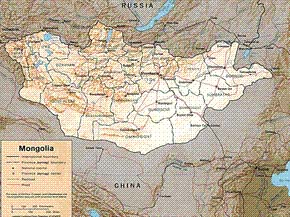 Mongolia is a landlocked country in northern continental Asia bordering with the Russian Federation on the north and the People’s Republic of China on the east. It has a land area of 1.6 million square kilometers, making it the fifth largest country in Asia and the seventeenth in the world.
Mongolia is a landlocked country in northern continental Asia bordering with the Russian Federation on the north and the People’s Republic of China on the east. It has a land area of 1.6 million square kilometers, making it the fifth largest country in Asia and the seventeenth in the world.
Geographic Situation of Mongolia, covering an area of 1,564,100 square kilometers, lies in the heart of the continent Asia. It stretches about 2,400 km from west to east and about 1,260 km from north to south and bounded on the north by Russia and on the southeast and west by China. Mongolia is mountainous country with an average altitude of 1,580 meters above the sea level. The lowest point Khokh-nuur in the east is 552 meters above sea level and the highest point is the mountain Nairamdal in the Mongolian Altai (in the west) which stands at 4,374 meters. The geography of the country is characterized by great diversity.
From north to south it can be divided into 4 areas, mountain-forest steppe, mountain steppe, semi-desert and the desert. In the west- north the mountain ranges and ridges are overgrown with wild forests, big lakes and tempestuous rivers. The vast grasslands of the Asian steppe stretch across the eastern part of the country. The Gobi Desert lies in the south occupying somewhat less than one-third of the Gobi Region, the rest being semi-desert grassland. Readmore…
Weather in Mongolia

For two or three months in summer, the weather is warm and pleasant and relatively hot in the southern Gobi region, where mid summer temperatures peak at around 40 degrees and there is little shade available.
Winter usually lasts from mid-October until April, with the coldest period being between mid-December and the end of February or mid-March when the temperature drops to -20 or -30C and occasionally even lower. Snow usually falls between mid-October and mid-April. There are some regions, especially in the northwest, where the temperature goes down to -40 to -50C. In the Gobi it drops to -40C.
Spring, which generally starts in March, is known for its constant dust storms and huge fluctuations in air pressure. The steppe gradually starts to sprout fresh, green pasture and even in the capital, the change is both visible and welcome Summer evenings in the Western Altai range tend to be cooler and local nomads have to wear warm and heavy clothes.
The annual rainfall begins in late July and continues until September. Humidity is generally low (47-73 /o), especially in winter. But in the country the number of sunny days ranges between 220 and 260 a year.
Geographical Map of Mongolia
 Geographically, Mongolia covers an area of 1,564,100 square kilometers and lies in the heart of the continent Asia. It stretches about 2,400 km from west to east and 1,260 km from north to south. Mongolia is bounded by Russia on the north and by China on the southeast and west.
Geographically, Mongolia covers an area of 1,564,100 square kilometers and lies in the heart of the continent Asia. It stretches about 2,400 km from west to east and 1,260 km from north to south. Mongolia is bounded by Russia on the north and by China on the southeast and west.
Readmore…
Time and Business Hours

Like the Chinese, the Mongolians use a lunar calendar to celebrate traditional holidays, such as the lunar new year. Years are traditionally grouped into five blocks of 12 years. Each block is named after one of the elements (Earth, fire, water etc) and each year is named after the 12 animals of the zodiac.
Nomads divide winter into periods of time in multiples of nine, the lucky number for Buddhists. The winter is 81 days long (nine times nine). At the end of the 81st day, Tsagaan Sar (White Month), is widely celebrated as the start of the lunar new year.
Government offices are usually open from 9 am to 5 pm on weekdays and lunch hour is 1 pm to 2 pm. Banks are supposed to open from 10 am to 3 pm weekdays. Mongolia introduced a five-day working week in 1998. Most private and state-run businesses open at about 10 am and close sometime between 5 and 8 pm. In the countryside most guanz: (canteens) seem to close for dinner (and often lunch as well). In reality, opening hours are often at the whim of staff. Readmore…
Shopping in Mongolia
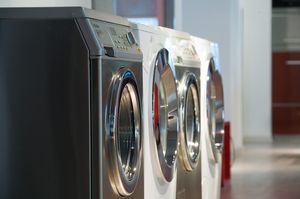 Ulaanbaatar department stores near downtown offer many curios, antiques, artwork and fine winter clothing. Good leather jackets, cashmere sweaters, camel wool vests and blankets can be found at excellent prices. Traditional embroidered boots with upturned toes, deels tied with silk scarves, fox fur hats and stylish Mongol jackets are mostly homemade but can be found in some shops. The supermarkets (or at least the Mongolian type) usually have stock foods like rice, western and local noodles, bread, sugar, flour. The stores in large cities like Ulaanbaatar are rather well stocked, you can get almost everything - if you search hard enough.
Ulaanbaatar department stores near downtown offer many curios, antiques, artwork and fine winter clothing. Good leather jackets, cashmere sweaters, camel wool vests and blankets can be found at excellent prices. Traditional embroidered boots with upturned toes, deels tied with silk scarves, fox fur hats and stylish Mongol jackets are mostly homemade but can be found in some shops. The supermarkets (or at least the Mongolian type) usually have stock foods like rice, western and local noodles, bread, sugar, flour. The stores in large cities like Ulaanbaatar are rather well stocked, you can get almost everything - if you search hard enough.
Readmore…
Mongolia Essentials
 Coming to Mongolia can be a big challenge. Knowing what to bring, how to get there, where to stay and how to get around is important if you want to make to most of your journey. This section is dedicated to getting you all the essential information you need in order to have a great, safe trip.
Coming to Mongolia can be a big challenge. Knowing what to bring, how to get there, where to stay and how to get around is important if you want to make to most of your journey. This section is dedicated to getting you all the essential information you need in order to have a great, safe trip.
Readmore…
Taxi & Buses in Ulaanbaatar
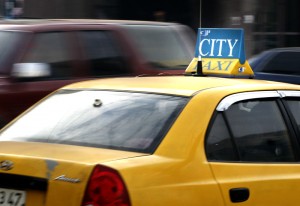
Taxis are usually the fastest and preferred method of transportation around the city. Taxis also refer to Jeeps and
micro buses that can be used to travel around Mongolia. City taxis come in two flavors; metered and un-metered. Metered taxis are generally yellow and look more professional, they all have working meters so that foreigners know how much to pay. Unmetered taxis usually just look like regular cars but can be slightly cheaper than metered cabs.
Readmore…
Tsagaan Sar - Mongolian Lunar New Year
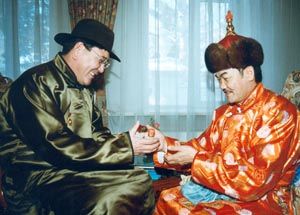 Tsagaan Sar is the Mongolian lunar New Year’s festival. It is often celebrated around the same time as the Chinese New Year. However, Mongolians generally deny any Chinese origin or influence, so the celebration is sometimes referred to as the Mongolian New Year or Asian New Year when translated into English.
Tsagaan Sar is the Mongolian lunar New Year’s festival. It is often celebrated around the same time as the Chinese New Year. However, Mongolians generally deny any Chinese origin or influence, so the celebration is sometimes referred to as the Mongolian New Year or Asian New Year when translated into English.
The White Moon holiday is celebrated two months after the first new moon following the winter solstice. In 2008, White Moon falls on Feb. 8th. After Naadam, Tsagaan Sar is the second-most important Mongolian holiday. Around the New Year people greet each other by saying “Amar mend uu”, a very formal greeting which one says to one’s elders. Mongolians also visit friends and family on this day and exchange gifts. Readmore…
Foreign Embassies in Ulaanbaatar
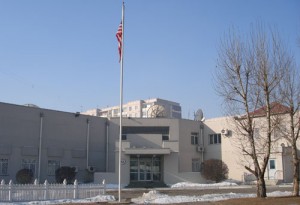 United States
United States
Postal Address: Central Post Office Box 1021
Working Hours: Mon-Fri 09.00-13.00/ 14.00-18.00
Consular Section: Mon, Wed, Fri 09.00-11.00
Phone: 976-11-329095, Fax: 976-11-320776
Republic of Korea
Olympic street 10 Sukhbaatar District
Working Hours: Mon-Fri & 09.00-12.30/ 14.00-18.00
Consular Section: Mon, Wed, Thu 10.00-12.30
Phone: 976-11-321548, 310153, Fax: 976-11-311157
Readmore…
 Mongolia has diplomatic relations with around 141 countries. Followings are the contact address for some of Embassy and Consulate of Mongolia.
Mongolia has diplomatic relations with around 141 countries. Followings are the contact address for some of Embassy and Consulate of Mongolia.















